Porosity
Type of resources
Topics
Keywords
Contact for the resource
Provided by
Years
Formats
Representation types
Update frequencies
Scale
-
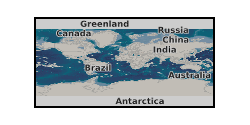
These data contain time series of stress, strain, confining pressure, pore pressure, pore volume, permeability and elastic wave velocities of samples of Purbeck Limestone deformed under hydrostatic and triaxial conditions at room temperature. All samples were saturated with decane as pore fluid.This dataset is used and fully described/interpreted in the paper: Brantut, N., M. Baker, L. N. Hansen and P. Baud, Microstructural control of physical properties during deformation of porous limestone, submitted to J. Geophys. Res.
-
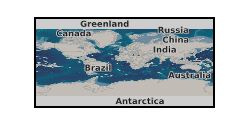
This data is described in section 6.4 of the following paper, Three-Field Block Preconditioners for Models of Coupled Magma/Mantle Dynamics by Rhebergen et al DOI:10.1137/14099718X
-
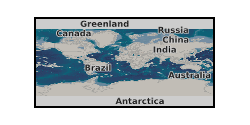
The images in this dataset show the mixing of two liquid solutions in a random bead pack as a function of time and in three-dimensions. The working fluids used in this study are solutions of methanol and ethylene-glycol (MEG, fluid 1) and brine (fluid 2). In particular, three mixtures of ethylene-glycol and methanol were prepared that differ in wt% ethylene-glycol, namely 55 wt% (MEG55), 57 wt% (MEG57) and 59 wt% (MEG59). Measurements are conducted using in the regime of Rayleigh numbers, Ra = 2000-5000. X-ray Computed Tomography is applied to image the spatial and temporal evolution of the solute plume non -invasively. The tomograms are used to compute macroscopic quantities including the rate of dissolution and horizontally averaged concentration profiles, and enable the visualisation of the ow patterns that arise upon mixing at a spatial resolution of about (2x2x2) mm3. We observe that the mixing process evolves systematically through three stages, starting from pure diffusion, followed by convection-dominated and shutdown. A modified diffusion equation is applied to model the convective process with an onset time of convection that compares favourably with literature data and an effective diffusion coefficient that is almost two orders of magnitude larger than the molecular diffusivity of the solute. The comparison of the experimental observations of convective mixing against their numerical counterparts of the purely diffusive scenario enables the estimation of a non-dimensional convective mass flux in terms of the Sherwood number, Sh = 0.025Ra. We observe that the latter scales linearly with Ra, in agreement with observations from both experimental and numerical studies on thermal convection over the same Ra regime.
-
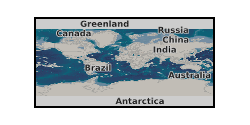
Data used for the peer-reviewed manuscript entitled 'Variation of hydraulic properties due to dynamic fracture damage: Implications for fault zones' by Aben, FM, Doan, M-L, and Mitchell, TM. Manuscript currently in revision for Journal of Geophysical Research. Data consists of: Text files with the mechanical data timeseries (confining pressure, and pore volume and pore fluid pressure for two pore fluid pressure intensifiers) obtained during permeability measurements of deformed rock samples. File name contains sample number. Additional two mechanical data files (calib15 and calib18) are calibration files for the pore volume measurements. Manually traced X-ray CT images obtained on six samples.
-
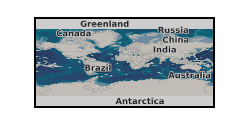
The images in this dataset are a sample of Bentheimer Sandstone from a micro-computed tomography (micro-CT) scan acquired with a voxel resolution of 6.00µm. We imaged the steady state flow of brine and decane in Bentheimer sandstone. We devised an experimental method based on differential imaging to examine how flow rate impacts the pore-scale distribution of fluids during coinjection. This allows us to elucidate flow regimes (connected, or breakup of the nonwetting phase pathways) for a range of fractional flows at two capillary numbers, Ca, namely 3.0E-7 and 7.5E-6. At the lower Ca, for a fixed fractional flow, the two phases appear to flow in connected unchanging subnetworks of the pore space, consistent with conventional theory. At the higher Ca, we observed that a significant fraction of the pore space contained sometimes oil and sometimes brine during the 1 h scan: this intermittent occupancy, which was interpreted as regions of the pore space that contained both fluid phases for some time, is necessary to explain the flow and dynamic connectivity of the oil phase; pathways of always oil-filled portions of the void space did not span the core. This phase was segmented from the differential image between the 30 wt % KI brine image and the scans taken at each fractional flow. Using the grey scale histogram distribution of the raw images, the oil proportion in the intermittent phase was calculated. The pressure drops at each fractional flow at low and high flow rates were measured by high precision differential pressure sensors. The relative permeabilities and fractional flow obtained by our experiment at the mm-scale compare well with data from the literature on cm-scale samples.
-
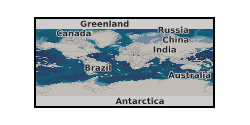
P* data obtained through hydrostatic loading experiments, using triaxial experimental apparatus, as well as yield curve data obtained through differential loading tests, prior to the discovery of P* for different synthetic sandstones. The methodology used was taken from Bedford et al. (2018, 2019). Grain size analysis data obtained using a Beckman Coulter LS 13 320 laser diffraction particle size analyser. Particle analysis was conducted on five different synthetic sandstones with different grain size distributions. Secondary electron and backscatter electron SEM images for natural and synthetic sandstones. Secondary electron images were stitched together to form a whole core image. They were then binarised following the methodology of Rabbani and Ayatollahi. (2015). Hexagon grid size data used to obtain the correct grid size for performing porosity analysis across an mage using Fiji software (Brown, 2000). Bedford, J. D., Faulkner, D. R., Leclère, H., & Wheeler, J. (2018). High-Resolution Mapping of Yield Curve Shape and Evolution for Porous Rock: The Effect of Inelastic Compaction on 476 Porous Bassanite. Journal of Geophysical Research: Solid Earth, 123(2), 1217–1234. Bedford, J. D., Faulkner, D. R., Wheeler, J., & Leclère, H. (2019). High-resolution mapping of yield curve shape and evolution for high porosity sandstone. Journal of Geophysical Research: Solid Earth. Brown, G. O., Hsieh, H. T., & Lucero, D. A. (2000). Evaluation of laboratory dolomite core sample size using representative elementary volume concepts. Water Resources Research, 36(5), 484 1199–1207. Rabbani, A., & Ayatollahi, S. (2015). Comparing three image processing algorithms to estimate the grain-size distribution of porous rocks from binary 2D images and sensitivity analysis of the grain overlapping degree. Special Topics & Reviews in Porous Media: An International Journal, 6(1).
-
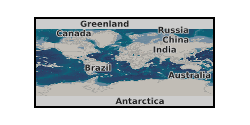
The data include the following: 1. Simulation input files (parameters used in free energy Lattice Boltzmann simulations). 2. Results from these simulations and the corresponding analysis, as presented in the manuscript "Pore scale modeling of drainage displacement patterns in association with geological sequestration of CO2". Free energy lattice Boltzmann method: A thermodynamically consistent numerical scheme to solve the hydrodynamic equations of motion, associated with two-phase flow at the pore-scale. Simulations were accelerated by using multiple general-purpose graphics processing units (GPGPUs).
-

This dataset contains experimental hydrostatic testing data with ultrasonic surveys and acoustic emission data as outlined in "Panza, E., Agosta, F., Rustichelli, A., Vinciguerra, S. C., Ougier-Simonin, A., Dobbs, M., & Prosser, G. (2019). Meso-to-microscale fracture porosity in tight limestones, results of an integrated field and laboratory study. Marine and Petroleum Geology, 103, 581-595, https://doi.org/10.1016/j.marpetgeo.2019.01.043". The data is provided in a .zip folder containing 11 files, with 10 files for each mechanical tests and 1 containing all the geophysical data recorded and calculated; accompanied by a README file for introduction. Files format is Microsoft Excel Worksheet (.xlsx) and data are tabulated. Each file contains the corresponding relevant sample’s details, and each column of data is clearly labelled, units included. For each experiment, mechanical dataset recorded time, axial force, axial displacement, axial stress, confining displacement, confining pressure, axial strains A and B, circumferential extensometer, and internal temperature. Physical dataset recorded sample’s dimensions, density, compressional (P) wave arrival time and shear (S1, S2) wave arrival times; details of calculated velocities and elastic parameters are also given. Ten right cylindrical samples of limestone from the Altamura Formation sampled at Pontrelli Quarry were tested in hydrostatic compression at a range of confining pressures (Pc = σ1=σ2=σ3) from 0 to 50, or 80 MPa, at 2 MPa/min. Samples were cored either horizontal (H) or vertical (V) that is respectively sub-parallel and sub-orthogonal to bedding; the orientation is indicated in the sample’s ID. Ultrasonic velocity measurements were performed at Pc = 0, 1, 2.5, 5, 10 MPa, and then at steps of 10 MPa up to the maximum Pc value. Each sample was tested oven dried (ca. 12 hours at 40 °C followed by cooling in a desiccator for 1 hour; all prior to the hydrostatic compression). All tests were conducted at room temperature. The experiments were conducted by Dr E. Panza, M. Dobbs and Dr A. Ougier-Simonin using the MTS815 Rock Testing System in triaxial configuration in the Rock Mechanics and Physics Laboratory of the British Geological Survey. All responsible for the collection and initial interpretation of the data.
-
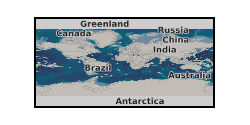
The data contains three-dimensional maps of the temporal and spatial distribution of tracer concentration during miscible displacements with aqueous solutions in two cylindrical porous samples, thus including beadpack (BP) and Ketton Limestone (KL). The dynamic imaging of the displacement process was conducted using two different PET scanners, namely a Siemens Biograph 64 PET/CT for the experiments with the BP (at Imanova Ltd, UK) and a Siemens INVEON DPET for the experiments with KL (at Stanford University, USA). The experiments were carried out at flow rates, q = 10 mL/min for BP and q = 4 mL/min for KL. Each PET image represents an average over a constant time frame (45 frames of 20 seconds each for BP and 40 frames of 60 seconds each for KL). For BP, each 3D tomogram includes (128 x 128 x 111) voxels with size (1.34 x 1.34 x 2) mm3. For KL, each 3D tomogram includes (128 x 128 x 159) voxels with size (0.78 x 0.78 x 0.8) mm3. The PET dataset was used in Kurotori et al. (2018)* to characterise mm-scale dispersion during miscible displacements in these two porous media. The experimental observations of the spatio-temporal evolution of the tracer plume can also be used as a benchmark test for different numerical models for solute transport in heterogeneous porous media. Further details on the use of the PET images can be found in Kurotori et al. (2018). *T. Kurotori, C. Zahasky, S. A. Hosseinzadeh Hejazi, S.M. Shah, S.M. Benson, Measuring, imaging and modelling solute transport in a microporous limestone, Chemical Engineering Science (2018), under review.
-
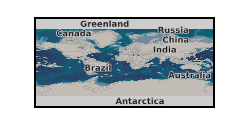
The images in this dataset are a sample of Doddington Sandstone from a micro-computed tomography (micro-CT) scan acquired with a voxel resolution of 4.2µm. This dataset is part of a study on the effects of Voxel Resolution in a study of flow in porous media. A brief overview of this study summarised from Shah et al 2015 follows. A fundamental understanding of flow in porous media at the pore-scale is necessary to be able to upscale average displacement processes from core to reservoir scale. The study of fluid flow in porous media at the pore-scale consists of two key procedures: Imaging reconstruction of three-dimensional (3D) pore space images; and modelling such as with single and two-phase flow simulations with Lattice-Boltzmann (LB) or Pore-Network (PN) Modelling. Here we analyse pore-scale results to predict petrophysical properties such as porosity, single phase permeability and multi-phase properties at different length scales. The fundamental issue is to understand the image resolution dependency of transport properties, in order to up-scale the flow physics from pore to core scale. In this work, we use a high resolution micro-computed tomography (micro-CT) scanner to image and reconstruct three dimensional pore-scale images of five sandstones and five complex carbonates at four different voxel resolutions (4.4µm, 6.2µm, 8.3µm and 10.2µm, scanning the same physical field of view. S.M.Shah, F. Gray, J.P. Crawshaw and E.S. Boek, 2015. Micro-Computed Tomography pore-scale study of flow in porous media: Effect of Voxel Resolution. Advances in Water Resources July 2015 doi:10.1016/j.advwatres.2015.07.012 We gratefully acknowledge permission to publish and funding from the Qatar Carbonates and Carbon Storage Research Centre (QCCSRC), provided jointly by Qatar Petroleum, Shell, and Qatar Science & Technology Park. Qatar Petroleum remain copyright owner.
 NERC Data Catalogue Service
NERC Data Catalogue Service